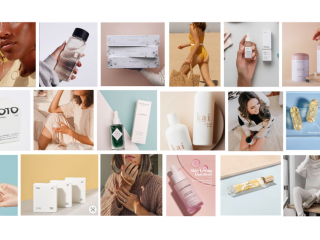Find the Right Influencers for Your Brand: Here’s How
The buzz around influencers is getting louder and as social platforms recognize the power behind the content they create, features available to track, engage, and maximize impact are better than ever.
But the truth is, not all influencers are created equal – and as this space becomes more saturated, finding the perfect match for your brand can feel like a daunting task. As seasoned professionals on the influencer front, we know it should largely be based on campaign goals, budget, product type and audience demographic. It’s important to have an understanding of who will resonate with your target demographic and know the ways their audience can be leveraged as well.
Follow these guidelines to help sort through the noise and land on the influencers that are right for your brand.
Micro vs. Macro?
The days of a million followers equating to high engagement and follows are long gone. While influencers with 500k+ followers can be beneficial in getting eyes on your brand, “micro-influencers” with a smaller following tend to have more engaged audiences. This can be great for actionable items like sweepstakes, demographic-specific campaigns, follows, and comments.
Partnership History
Successful partnership history is a major plus when choosing the right influencer for your brand. Researching audience engagement on former brand-related posts can give you a clearer vision of what to expect from your sponsored posts and can showcase an influencer’s success rates.
Platform Activity
Depending on your campaign goals, the right influencer might vary based on platform. For example, with recent changes in Instagram’s influencer partnership and boosting/whitelisting capabilities, you may find the right influencer is on a platform where paid-boosting is easier – like Facebook.
Audience demographic is also at play when choosing the best platform for your influencer. For your teen demographic consider looking at YouTube, Instagram, and Snapchat; for millennials, Instagram, Twitter, and Facebook; and for Gen X, Facebook and Pinterest. This is ever-evolving, so having a deeper knowledge of social platforms – new and old – is helpful.
Social Rating
Each brand’s comfort level with an influencer’s personal and lifestyle posts is different. Make sure you have guidelines when it comes to things like language and profanity, political posts, and sexually explicit content. If your brand is a swimsuit line, extra skin may get the green light, while a more conservative brand may prefer an influencer who airs on the G-rated side. Set clear expectations and parameters upfront help to avoid any issues or surprises down the line.
Content Quality
When mapping out influencer criteria and brand guidelines to follow, make sure you’re working with an influencer who has the capability of creating the content you’re looking for. This applies to everything from the type of narrative they’ll craft for their copy, to their ability to follow the rules (i.e. hashtags, CTAs, etc.), to the type of camera they’ll be using. Success is in the details – the better the quality of a post, the better the engagement.
Do you have questions or awesome influencer success stories? Drop us a line in the comments!



Leave a Reply